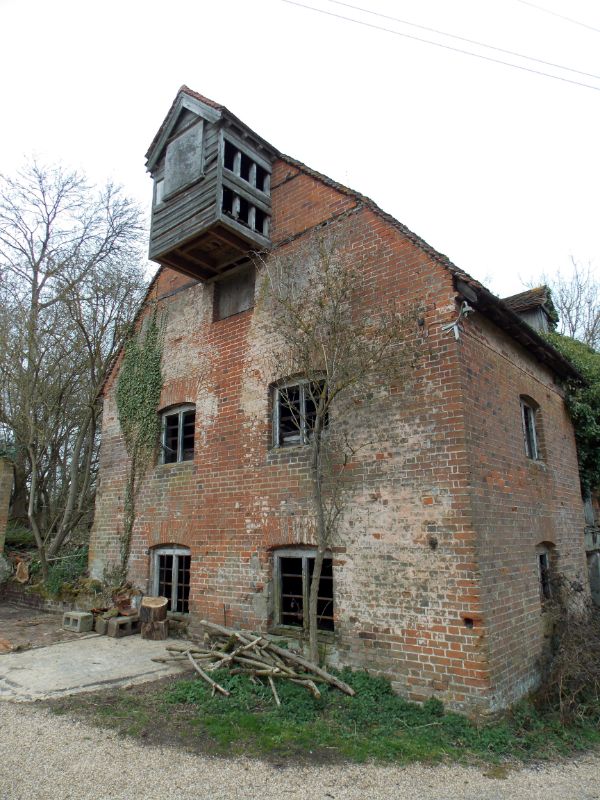SPAB Mills Day Event: Mills At Risk on 30 November 2024 unambiguously brought attention to the plight of mills of all types in the UK.
The speakers all had first-hand knowledge of milling, caring, fundraising or campaigning for mills and each brought a thoughtful picture of their work.
Duncan McCallum, chair of SPAB and nearly 40 years working within the heritage sector, set the scene of buildings at risk generally; the listing process and the potential range of funds available for repairs. This was not to say applications would be successful, with diminishing pots of money and constraints generally within the heritage sector and government.

Polegate Windmill. Photo credit: Cameron Southcott.
We learned that buildings and structures on the national At Risk registers were more likely to attract grants but keen competition for funding remains.
Duncan acknowledged the detailed work carried out by volunteer, Toby Huitson, for the Mills Section own At Risk Register. This was published in the recent Mill News.
Subsequently, we were treated to inside stories of how mills were abandoned, vandalised, or badly repaired and the sometimes massive costs of restoration, even if it were possible. We learned there was a range of practical skills required and a countrywide need for more trained and qualified millwrights. Something the Mills Section has and will continue to fund when possible through its millwright fellowship scheme. You can read about the endangered craft of millwrighting in this blog post.

Ramsey Windmill Essex 1938 from 1938 SPAB annual report © SPAB
Luke Bonwick, millwright consultant, examined a selection of mills, some repaired and working, others badly repaired and still at risk. He debated the current situation and with the advent of cash-strapped local authorities, such as Kent County Council, disposing of their mills, the number of mills at risk is likely to increase as volunteers struggle to take them over. Luke also touched on the difficulty over which mills deserve to be saved as compared to others; although recognising that they are a diminishing resource.
Individual case studies included Tilty Mill, Essex, about which David Kenny gave an impassioned plea for ideas as to how to save it from further decay. It was a story of efforts to prevent the total loss of a worthy candidate and how David felt he'd come to the end of the road trying to seek support.

South gable wall of abandoned Tilty mill in 2015. Photo by Acabashi CC BY-SA 4.0.
His plea was answered by Lydia Franklin of SAVE Britain's Heritage. Lydia gave us a run down of the national campaigning group's work since the publication 40 years ago of Satanic Mills. She illustrated a depressing picture of vandalism and neglect plus, how local planning authorities were granting permissions for demolition when there were cases for restoration and housing or community uses.
Ed Morton and Mark Rickards presented a double act on the story of their project at Thaxted Windmill. They highlighted the extensive programme of consultations; the time taken to obtain information required and the long list of professionals involved in the process for a major funding application
We learned from Nick Hill how tree ring dating/dendrochronology can help with the dating of heritage timber buildings. The SPAB owned Kibworth Harcourt post mill in Leicestershire has been thoroughly examined to ascertain the dates of its various sections.
Nick explained the process as to how core samples were removed from carefully chosen timbers which, after testing, would identify the tree species and date. Generally, mills would be built of green oak so the date of tree felling is likely to coincide with the date of the structure.
Overall, an excellent day to learn more about mills - their vulnerability, inequalities in repair, where to go for further advice, information and potential funding. Some delegates quickly seized the opportunity for networking to gain support and to further their knowledge.
Carole Leith
Vice Chair Mills Section

